Jinyun Natural Calligraphy Museum, Lishui, Zhejiang

In a 5A-rated tourist attraction — Xiandu Scenic Area —in Jinyun county in Lishui, Zhenjiang hides a museum presenting a thousand-year history of natural calligraphy. It is the largest group of cliff inscriptions in Jiangnan —Ni Weng Cave of the Xiandu Scenic Area.
Ni Weng Cave is a sacred place of seclusion, named after a hermit Ni Weng. Ni Weng is another name of Ji Ran (Ji Ni), a famous counselor and economist of the Spring and Autumn Period. According to the history records, he was a man of unbelievable erudition, very good at calculations. During his visit to the Yue state in the South, he took Yue's senior official Fan Li as an apprentice. Ji Ni helped Fan Li to plan how the state of Yue could destroy the state of Wu. After the success, Ji Ni retired to live a secluded life in Xiandu.
Li Zhi, Minister of punishments of the Ming Dynasty (also known as Xushan), and Fan Xianke, imperial censor (also known as Doushan), also once lived here as hermits.
Cliff inscriptions in Xiandu are considered Major Historical and Cultural Site Protected at the National Level. It is the largest collection of stone engravings protected by the state. It has a total of 126 objects, amounting to one-third of the stone engravings heritage of Lishui and one-ninth of Zhenjiang's heritage.
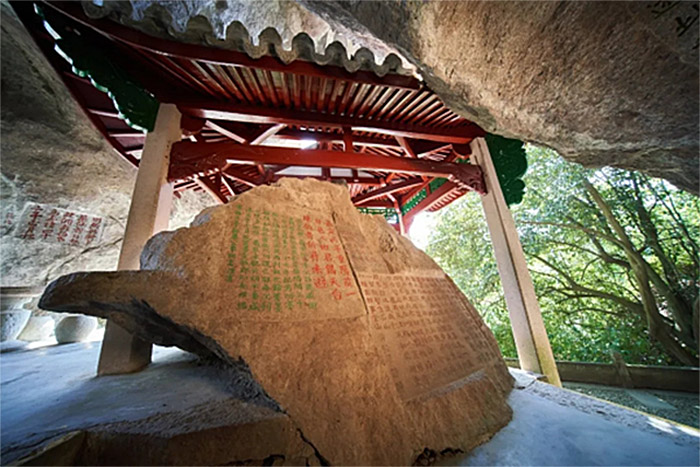
Xiandu cliff inscriptions are mainly concentrated in Ni Weng Cave (Chuyang Mountain), where there are 63 objects (including 4 contemporary pieces), accounting for more than half of the total number of engravings in the Xiandu Scenic Area.
Stone carvings in Xiandu have a long history, spanning from the Tang Dynasty to the present day. There are various scripts, such as cursive and semi-cursive, clerical and seal scripts, and various types of traditional Chinese poetry, such as shi, ci, qu and fu, presented with no shortage of masterpieces and works of famous calligraphers. It can be said to contain half the history of Chinese calligraphy.
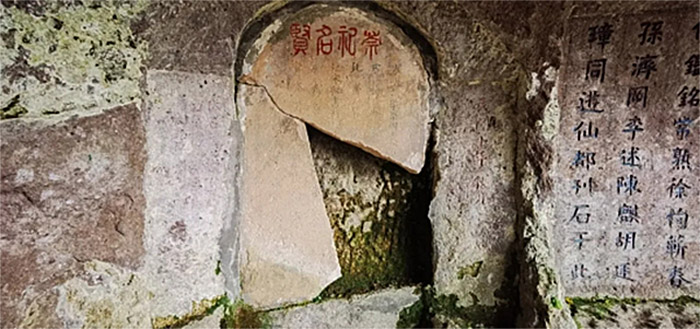
The fragment of a carved stone tablet "Worship men of great virtue and wisdom" dates from the first year of the reign of the Wanli Emperor (AD 1573), it is inscribed with the writings of an incorruptible censor Fan Xianke, Jingyun County head magistrate Mei Chun, as well as Confucius.
There are the inscriptions of all the famous people that have visited Xiandu, including Xie Lingyun, a poet in the genre of Shanshui of the Southern Dynasties, Tao Hongjing commonly known as the Prime Minister in the Mountains, Li Yangbing, a calligrapher of the Tang Dynasty, Zhu Xi, a Neo-Confucian master of the Song Dynasty, Qian Yueyou, a scholar of the Song Dynasty, and Li Shifu, a county magistrate of the Ming Dynasty.
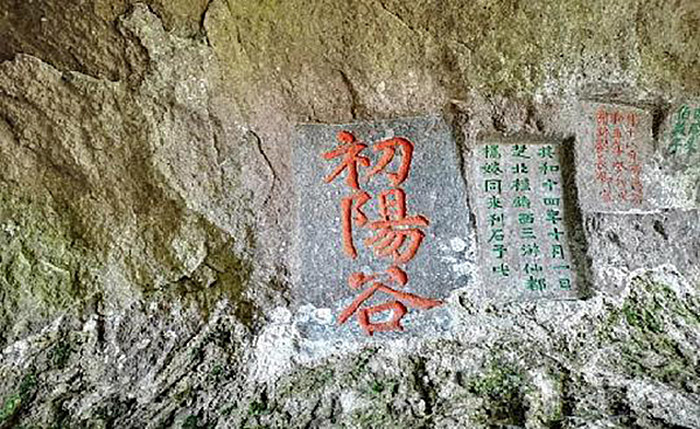
The inscription ”Chuyang Valley" is the most thought-provoking piece in the cave. The first character lacks a dot, the calligrapher did that on purpose. Only the first ray of the morning sun can complete this engraving.
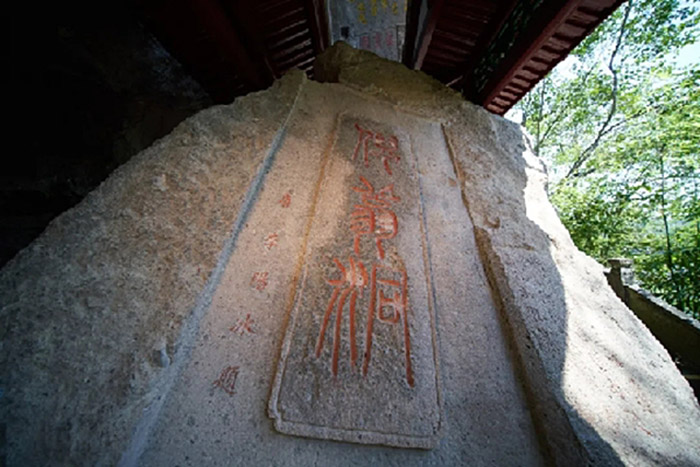
The inscription "Ni Wen Cave" inside the cave is one of the most valuable pieces of all carvings of Xiandu. It is made by the famous Tang calligrapher, the first county magistrate in the written history of Junyun county, Li Yangbing.
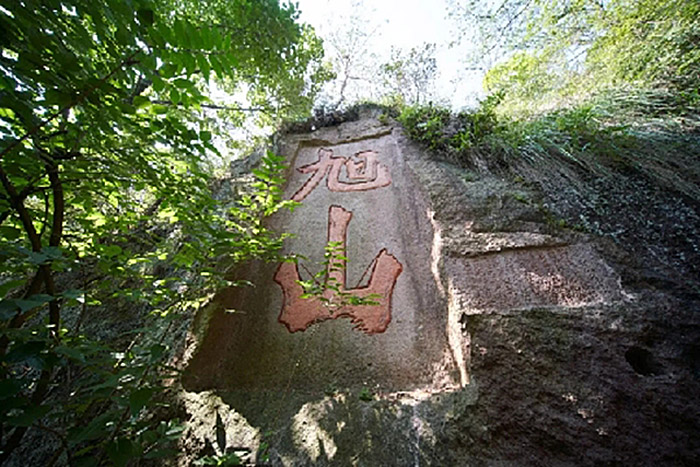
The inscription "Xushan" is the largest in the cave, the diameter of the characters is more than 2 meters, it is one of the Five Great Carvings. It was written by Fan Wende, Jingyun County magistrate, the fourth son of Fan Xianke, during the reign period of the Emperor Wanli of the Ming Dynasty.
Xushan is the name of Li Zhi, Minister of punishments of the Jinyun County of the Ming Dynasty, who lived here in his later years. Li Zhi had the reputation of an incorruptible official, righteous and just, not afraid of threats.
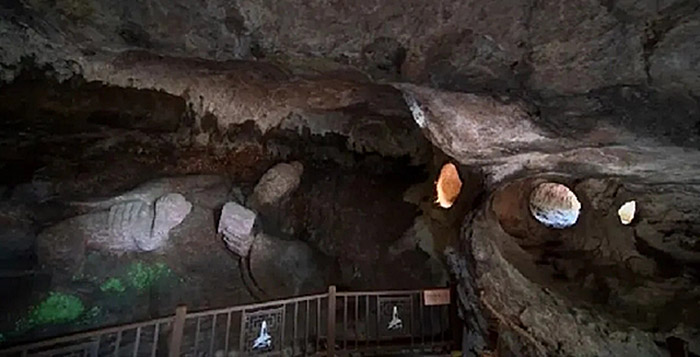
Ni Weng Cave is also known as Sunrise or Morning Sun Cave, every morning first rays of the sun light it up. Morning sunlight comes through three holes in the cave walls from three different directions, creating what is called "Three holes at the Sunrise".
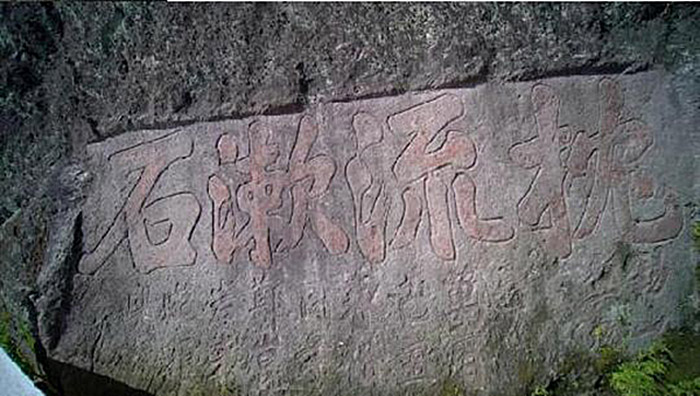
This inscription was written by Gong Mian, a famous poet and calligrapher of the Ming Dynasty in the 17th year of the reign of the Wanli Emperor of the Ming Dynasty during his trip to Xiandu. It says "to pillow one's head on stream and gargle one's mouth with pebbles", in the old days, this saying referred to the life of a hermit.
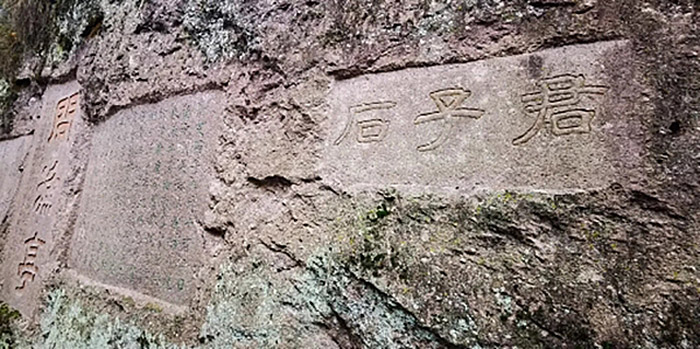
Wenyu Pavilion is built on a large boulder shaped like lotus petals, surrounded by water, it is called Junzi Stone. The carvings next to the pavilion read "Junzi Stone", "Wenyu Pavilion", etc. "Wenyu Pavilion" was written in large characters in the official script lishu by a famous Jingyun calligrapher and painter working with metal and stone, one of the earliest members of the Xiling Seal Art Society. "Junzi Stone" is written in official script, dating from no later than Ming Dynasty, according to the surrounding inscriptions.
Source: www.zj.xinhuanet.com
Calligraphy is the art of deliberate hieroglyphic corruption and transformation in order to reach natural harmony.



